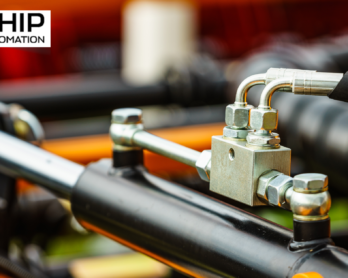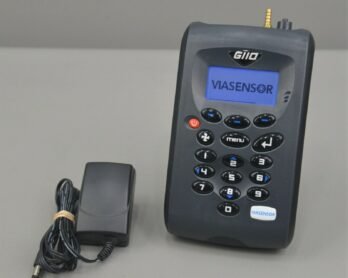In the pursuit of understanding and mitigating the impact of carbon dioxide emissions, the role of advanced technology becomes pivotal. This brings us to the realm of carbon dioxide analyzers, sophisticated instruments designed to measure and analyze the concentration of CO2 in various environments. As the United States strives for sustainable practices and environmental awareness, delving into the science behind these analyzers provides valuable insights. In this comprehensive exploration, we unravel the intricacies of measuring CO2, shedding light on the technology, applications, and significance of carbon dioxide analyzers for the USA audience.
Unveiling the Carbon Dioxide Analyzer: A Technological Marvel
Carbon dioxide analyzers are instrumental in quantifying the presence of CO2 in the air, helping monitor indoor air quality, assess industrial emissions, and contribute to climate research. The science behind these analyzers is a combination of innovative sensor technologies, data analysis algorithms, and real-time monitoring capabilities.
Key Components of a Carbon Dioxide Analyzer:
- Infrared Gas Sensors:
- Principle: Infrared sensors operate on the principle that CO2 molecules absorb specific wavelengths of infrared light.
- Detection Method: The sensor emits infrared light through a sample gas, and the amount absorbed by CO2 molecules is measured to determine concentration.
- Non-Dispersive Infrared (NDIR) Technology:
- Efficiency: NDIR technology enhances the efficiency of infrared gas sensors for accurate and selective CO2 measurement.
- Dual-Beam Design: Many analyzers employ a dual-beam design, comparing the infrared light absorbed by the sample gas with that absorbed by a reference gas.
- Data Analysis and Display:
- Microprocessors: Advanced microprocessors process the raw data from the sensors, applying calibration factors to ensure accuracy.
- Digital Display: Analyzers often feature digital displays, providing real-time CO2 concentrations for immediate monitoring.
Applications of Carbon Dioxide Analyzers:
1. Indoor Air Quality Monitoring:
- Ventilation Control: Analyzers contribute to maintaining optimal indoor air quality by controlling ventilation systems based on CO2 levels.
- Occupant Comfort: Monitoring CO2 helps create comfortable and healthy indoor environments for occupants.
2. Industrial Emissions Monitoring:
- Emission Compliance: Industries utilize analyzers to monitor and control CO2 emissions, ensuring compliance with environmental regulations.
- Process Optimization: Real-time data aids in optimizing industrial processes to minimize carbon footprint.
3. Climate Research:
- Greenhouse Gas Studies: Carbon dioxide analyzers play a crucial role in greenhouse gas studies, providing data for climate research and global warming assessments.
- Long-Term Monitoring: Continuous monitoring allows scientists to track changes in atmospheric CO2 concentrations over extended periods.
4. Medical Applications:
- Respiratory Monitoring: In medical settings, analyzers assist in monitoring respiratory gas concentrations, particularly during anesthesia and critical care.
- Diagnostic Tools: They serve as diagnostic tools for conditions related to abnormal CO2 levels in breath.
Benefits of Carbon Dioxide Analyzers:
1. Precision and Accuracy:
- High Precision: Advanced sensor technologies offer high precision in CO2 measurements, even at low concentrations.
- Calibration Techniques: Calibration procedures ensure accuracy, with some analyzers featuring automatic calibration capabilities.
2. Real-Time Monitoring:
- Immediate Feedback: The ability to provide real-time data allows for prompt decision-making and response to changing CO2 levels.
- Continuous Surveillance: Continuous monitoring ensures that variations are detected without delays.
3. Environmental Impact:
- Emission Reduction: In industrial settings, analyzers contribute to emission reduction efforts by identifying opportunities for efficiency improvements.
- Sustainability Practices: The data generated by analyzers aids in implementing sustainable practices to reduce carbon footprints.
4. Health and Safety:
- Occupational Health: In workplaces, maintaining optimal indoor air quality promotes the health and well-being of employees.
- Emergency Response: Analyzers play a role in emergency response situations where the rapid detection of abnormal CO2 levels is critical.
Challenges and Future Developments:
1. Sensor Sensitivity:
- External Influences: Sensors can be sensitive to external factors such as temperature and humidity, impacting accuracy.
- Advancements: Ongoing research aims to enhance sensor robustness and reduce susceptibility to environmental conditions.
2. Miniaturization and Portability:
- Compact Designs: Advancements in miniaturization enable the development of portable analyzers for on-the-go applications.
- Field Research: Portable analyzers facilitate field research and expeditions, allowing researchers to gather data in diverse environments.
3. Integration with Smart Systems:
- IoT Connectivity: The future may witness increased integration with the Internet of Things (IoT) for seamless connectivity and data sharing.
Smart Buildings: Analyzers may become integral components of smart building systems, contributing to energy-efficient operations.











